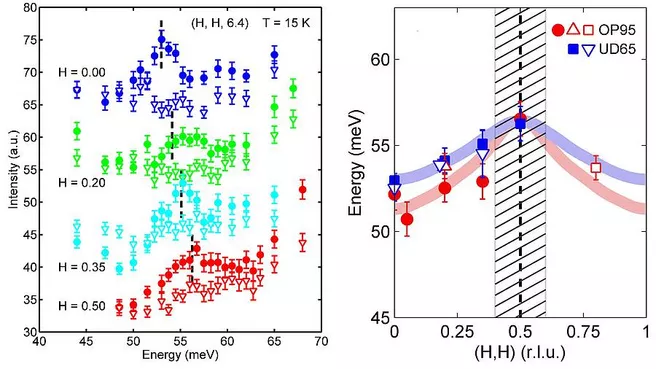Reaching an understanding of the interplay between magnetism and the superconductivity at high transition temperatures (high-Tc) in the cuprates has been a major challenge in condensed matter physics for more than two decades. In a recent breakthrough, Yuan Li et al. (published in Nature) discovered novel magnetic excitations that are fundamentally different from the well-known antiferromagnetic fluctuations. The new excitations are found to be associated with the enigmatic 'pseudogap' phase, which is characterized by a set of anomalous physical properties and lies at the core of the high-Tc puzzle.
These results have the profound implication that the cuprates are best described by a microscopic model which explicitly considers the active role of oxygen orbitals and which predicts a novel quantum state formed of charge-current loops. Due to their weak dispersion, the new excitations are not easy to observe in inelastic neutron scattering experiments, and they had so far remained hidden.
The eventual discovery was made possible by using triple axes spectrometers including PUMA at the neutron source Heinz Maier-Leibnitz in Garching. “The PUMA spectrometer at the FRM II provided the necessary high neutron flux with excellent background control”, says Dr. Yuan Li, physicist at the Stanford University (USA). He emphasises, that in particular, the measurements performed at PUMA with the instrument scientists Dr. Klaudia Hradil and Dr. Richard Mole led to the initial observation of a highly unusual aspect of the signal’s momentum dependence. This may help to reveal the underlying physics of the superconducting cuprates. More measurements are planned for the future in order to further guide the development of a quantitative theoretical model of the cuprates.
Original publication:
Hidden magnetic excitation in the pseudogap phase of a high-Tc
superconductor, Nature, 283-285 (11 November 2010), DOI: 10.1038/nature09477
